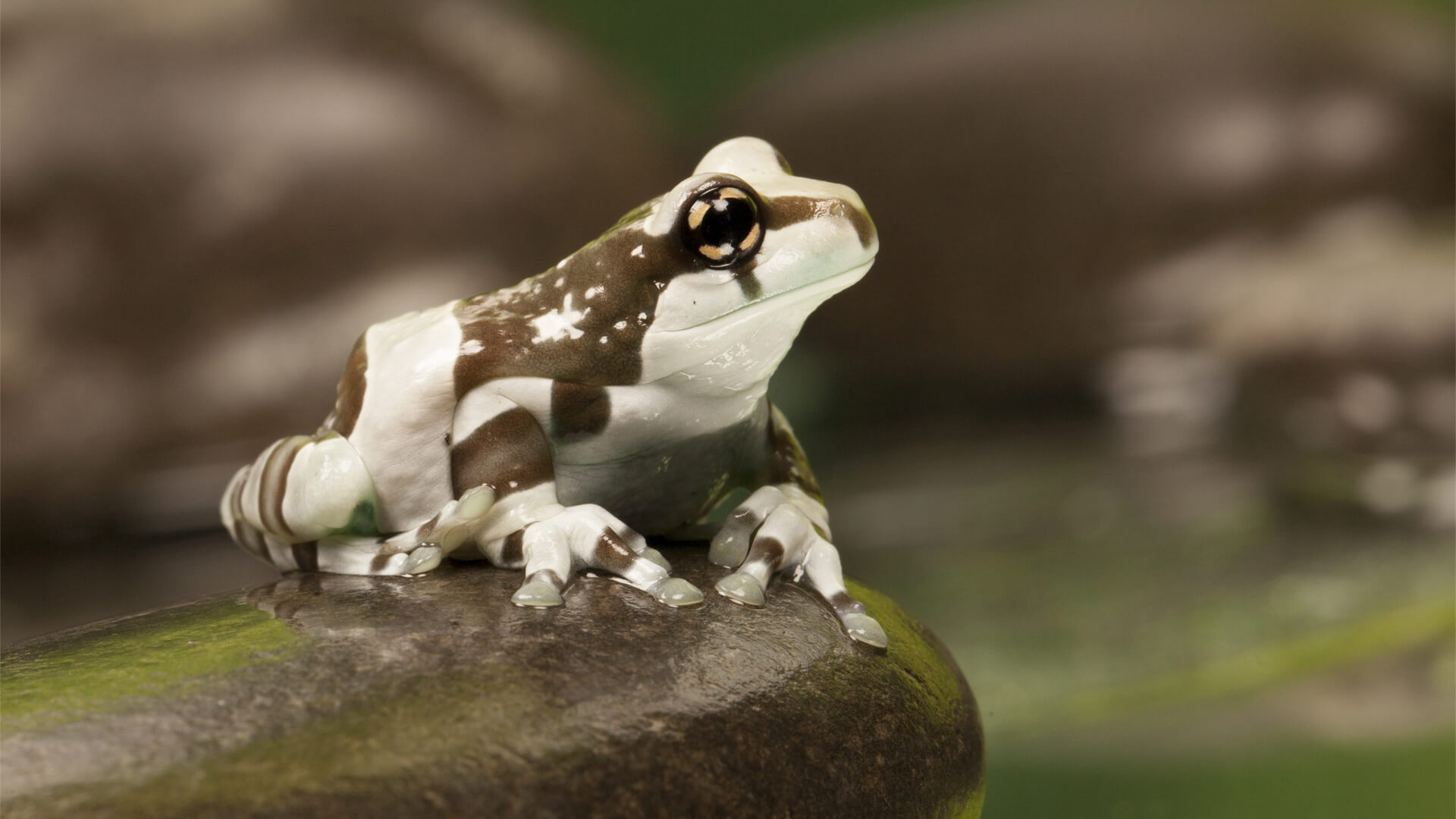
This species gets its name "milk" frog from the milky substance they secrete from their glands when threatened.
Amazon milk frogs have sticky toe pads to aid in climbing trees. Even during the breeding season, they do not come out of the trees. Males stake out a tree hole or bromeliad that is full of water and call to females. A female then comes and lays her eggs, which the male fertilizes. Finally, males actually then call for a second female, who lays eggs which become unfertilized food for the tadpoles.

Although a common species, Amazon Milk Frogs are highly dependent on tall trees. Thus, deforestation and habitat loss is a concern for their future.

Dave
The Amazon milk frog is also known as the "mission golden-eyed" tree frog or "sapo canoeiro", meaning "boatman frog". Their croak sounds like oars tapping the side of a canoe!
South America
Tropical rainforests
4 inches long (max.)
Insects, small vertebrates
Snakes, birds, lizards, mammals
Milky, poisonous substance
Up to 2000 eggs per clutch
Least Concern
Up to 25 years
